May 24, 2025 | 16:19 GMT +7
May 24, 2025 | 16:19 GMT +7
Hotline: 0913.378.918
May 24, 2025 | 16:19 GMT +7
Hotline: 0913.378.918
Currently, Soc Trang province has 10,300 hectares of forest, the majority of which are mangroves functioning as protective barriers against waves and sea encroachment (nearly 6,796 hectares), with the production forests and special-use forests in the landscape protection area of My Tu district (Provincial Party Committee base in My Phuoc commune, My Tu district). Due to Soc Trang province not yet establishing a coastal forest management board, nearly 60% of the forest area is currently managed by local authorities.
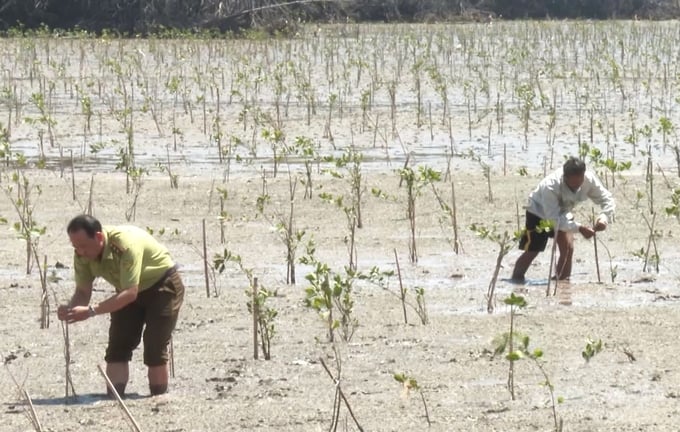
Members of forest management and protection teams actively patrol with the forestry force, caring, and protecting newly planted areas of coastal protection forests. Photo: Trung Chanh.
Specifically, the forest area is divided among forest owners and organizations managing the land in Soc Trang province (in 2023), including 2.947 hectares managed by economic organizations, 224 hectares by armed forces units, 904 hectares by the Forestry Sub-department, and 323 hectares by households and individuals. Notably, 5.901 hectares are being managed by local communes and wards.
According to Mr. Tran Trong Khiem, Deputy Director of the Department of Agriculture and Rural Development of Soc Trang, most of the province’s coastal protection forests have not been allocated or leased and are currently managed by commune-level authorities. To effectively protect the managed forest areas, commune-level authorities have established forest protection teams. From 2015 to 2023, with the permission of the Provincial People's Committee, the Soc Trang Forestry Sub-department has signed forest protection contracts with these teams.
These forest protection teams use the contract funds to support their patrol work. In addition, the team members are locals who live near the forest, earning their livelihood through activities such as fishing under the forest canopy. In most cases where activities affect the forest, the members of the protection team are the first to detect and report them to the forestry authority and the commune-level People's Committee for timely intervention and resolution. As a result, the coastal protection forests in the province have been better safeguarded.
To date, the province has established 19 forest management and protection teams in 11 communes, wards, and towns, with a total of nearly 210 members. These teams not only serve as the eyes and ears but also as a powerful support for the forestry force in the protection and development of coastal protection forests.
The members of the forest protection teams are also actively involved in promoting and disseminating policies and laws related to the forestry sector to households living near the forest.
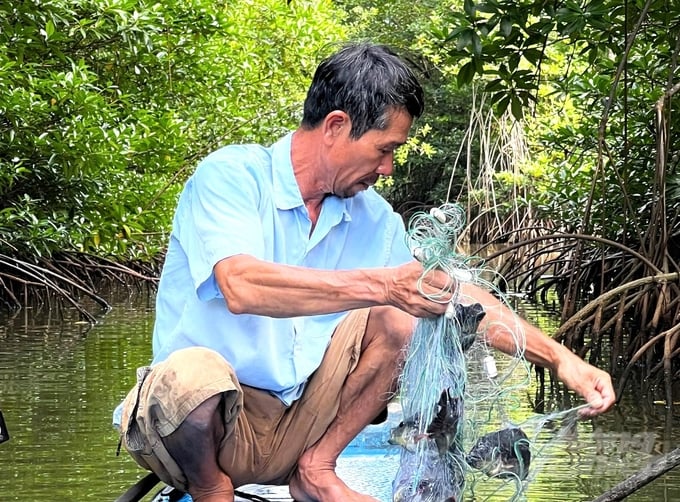
Members of the forest management and protection teams are supported in developing livelihood models under the forest canopy, providing stable income, and allowing them to focus more on forest protection. Photo: Trung Chanh.
According to the Soc Trang Forestry Sub-department, most of the members of the forest management and protection teams make their living from fishing or harvesting aquatic products under the forest canopy. Therefore, to ensure their long-term commitment to the forest, it is essential to create sustainable livelihood models under the forest canopy without degrading the forest area.
Currently, many members of the forest management and protection teams have received support from agricultural programs and projects in the form of seedlings and materials to develop livelihood models near and under the forest canopy, such as farming clams, snails, frogs, and growing vegetables. The implementation of these economic models has provided the members with a stable income, helping them to care for and protect the forest better.
As a result, over the years, deforestation or encroachment on forest land has ceased to occur, and the forest biodiversity has been increasingly protected and developed. The restoration and proper care of coastal mangrove forests have enhanced their resilience to sea waves and storms, improving the living and production conditions of the local communities.
Typically, local forest protection teams are divided into groups of about 5-6 people, patrolling 2-3 times a week. If there are newly planted mangrove areas in mudflats, they take turns caring for them, checking for weak or dead trees to replace, or using ropes to straighten trees knocked down by wind or waves by tying them to stakes.
Translated by Kieu Chi
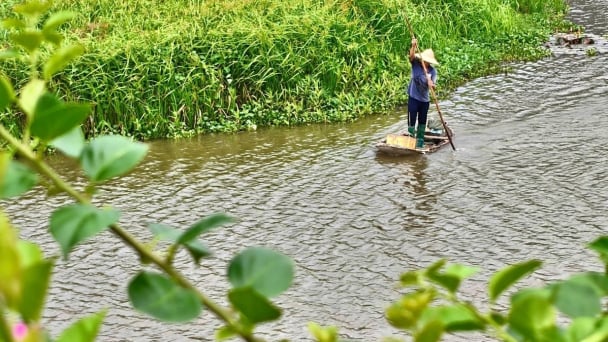
(VAN) In the tranquil wetlands of Van Long, there are quiet souls who guard the forests, nurture the waters, and oversee every bird and troop of langurs as protecting the essence of a living heritage.
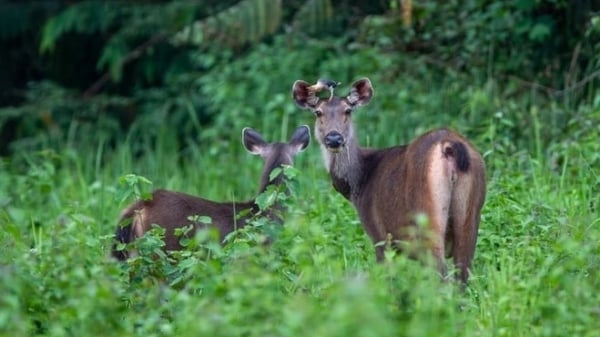
(VAN) WWF, GIZ, IUCN, UNDP call for biodiversity conservation and sustainable development must be regarded as a unity in strategies for a green future.
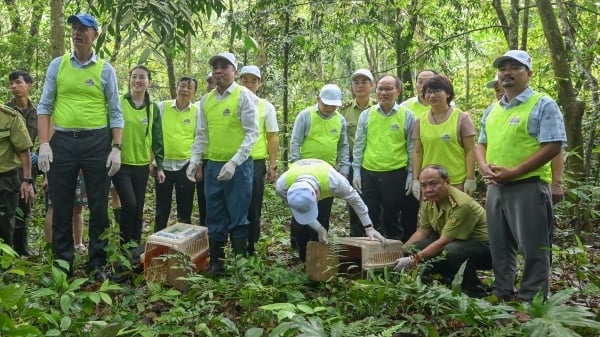
(VAN) On celebration of International Day for Biological Diversity, Deputy Minister Nguyen Quoc Tri called for practical actions to address nature and biodiversity conservation.
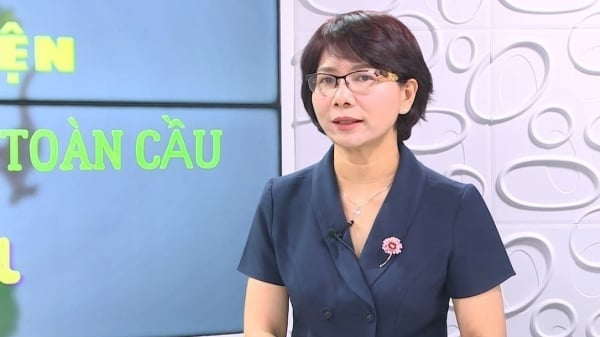
(VAN) Dr. Hoang Thi Thanh Nhan – Deputy Director of the Nature and Biodiversity Conservation Agency – highlighted this on the International Day for Biological Diversity, May 22, 2025.
![Ho Chi Minh city adapts to climate change: [2] Accelerating action](https://t.ex-cdn.com/nongnghiepmoitruong.vn/608w/files/chiqk/2025/05/22/4024-4220-bien-doi-khi-hau-1-100626_766.jpg)
(VAN) Clearly recognizing the challenges posed by climate change, Ho Chi Minh city has swiftly shaped its policies and implemented practical solutions to adapt.
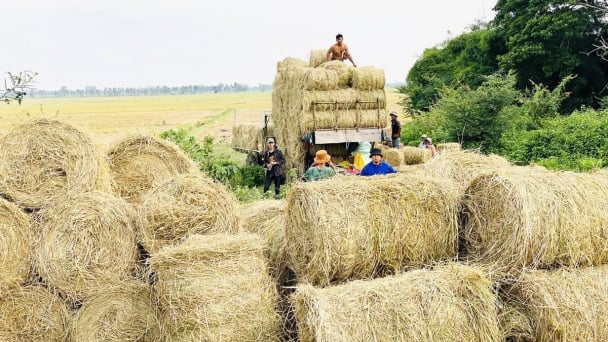
(VAN) Rice straw is no longer just a discarded byproduct, but it is becoming a green resource that helps farmers in the Mekong Delta reduce emissions and promote circular, sustainable agriculture.
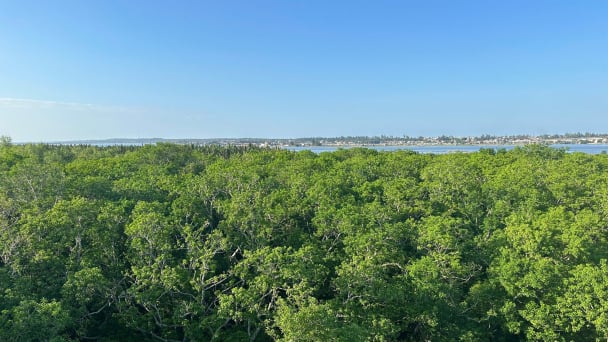
(VAN) Other Effective Area-based Conservation Measures (OECMs) are solutions that contribute effectively to achieving the goals of the Kunming–Montreal Global Biodiversity Framework.